Learn how to make coconut milk at home with only 2 ingredients! Rich, naturally sweet, and WAY cheaper than store-bought, this coconut milk is the perfect dairy-free alternative for cooking, baking, or drinking.
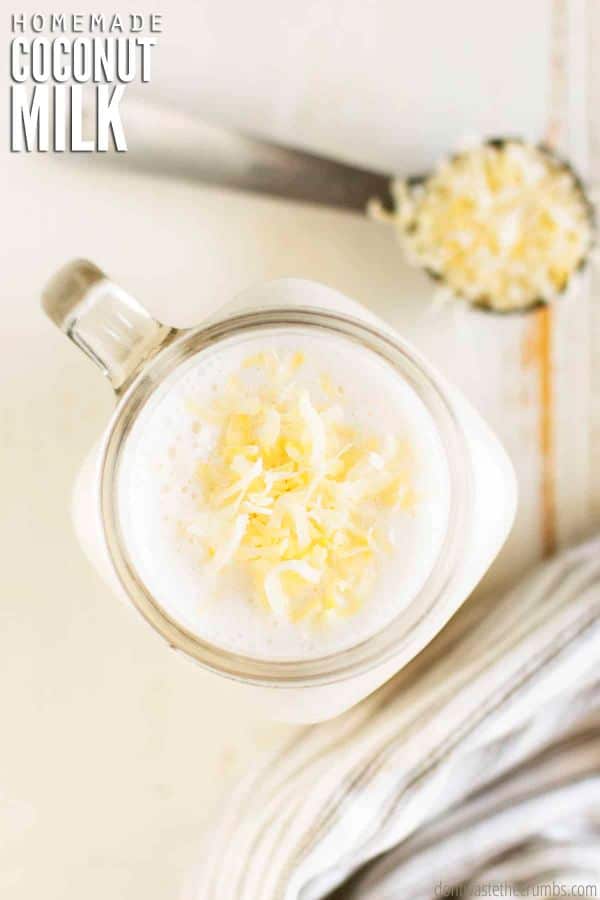
Although we don’t have any dairy allergies, we still use a variety of dairy free milk substitutes. We realized after doing the Whole30 that we do best when we keep dairy to a minimum.
And if we’re looking for a dairy-free milk alternative, I usually turn to almond milk.
I like almond milk when I’m going to make plant-based beverages, like in my morning smoothies, or if I want to make my dairy-free ranch dressing a little bit thinner. And it makes a delicious dairy-free alfredo sauce!
But coconut milk is the other dairy-free milk I turn to most often, and that’s because it’s yummy in smoothies too, but it’s also a must-have when you’re making recipes like Instant Pot Curried Butternut Squash Soup and Coconut Rice.
Luckily, learning how to make coconut milk couldn’t be easier!
COCONUT MILK
Not only is this coconut milk recipe naturally sweet and delicious, it’s also:
- Frugal. Homemade coconut milk is WAY more affordable than buying organic coconut milk from the store.
- Simple. You only need 2 ingredients to make coconut milk. You can’t get much simpler than that!
- Healthy. Coconuts are rich in saturated fat among other health benefits, but people generally don’t want to drink milk with chunks of fat in it (or chunks of coconut). To make commercial coconut milk smooth, they have to add a bunch of additives and preservatives. The homemade version skips all that!
- Versatile. Use it in sweet or savory recipes, for making smoothies, or just for drinking!
- Dairy-free. And naturally gluten free. Perfect for those who eat dairy-free, or follow vegan or paleo diets.

HOMEMADE COCONUT MILK RECIPE INGREDIENTS
- Unsweetened coconut flakes or shredded coconut (see note below for amounts)
- Hot water, filtered
- Sweetener (optional)
- Vanilla extract (optional)
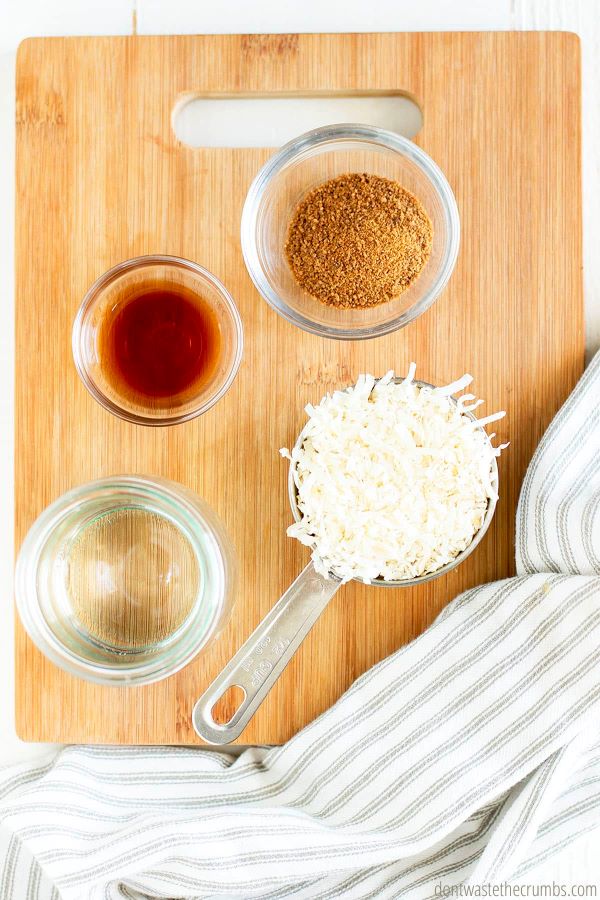
HOW TO MAKE COCONUT MILK
Step 1: Measure coconut flakes and hot water into a blender.
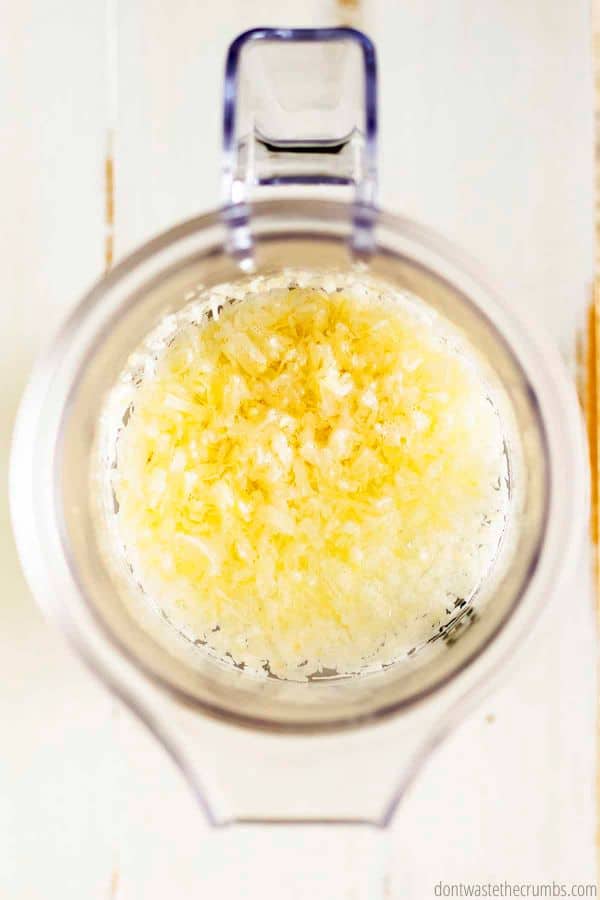
Step 2: Process for 45 seconds to 1 minute and repeat as needed. Add optional sweetener and vanilla extract to the final blend.
Note: Shredded coconut and coconut flakes lie differently in the measuring cup, so you don’t need as much shredded coconut if you choose to use that instead.
- To use shredded coconut instead of coconut flakes, use ¾ cup instead of 1 cup.
- For two cups: ½ cup shredded coconut, 2 cups hot water.
- For one cup: ¼ cup shredded coconut, 1 cup hot water.
Wasn’t that easy? In less than 3 minutes (including the time to measure), you have some of the best quality coconut milk you’ll find. And it’s SO delicious!
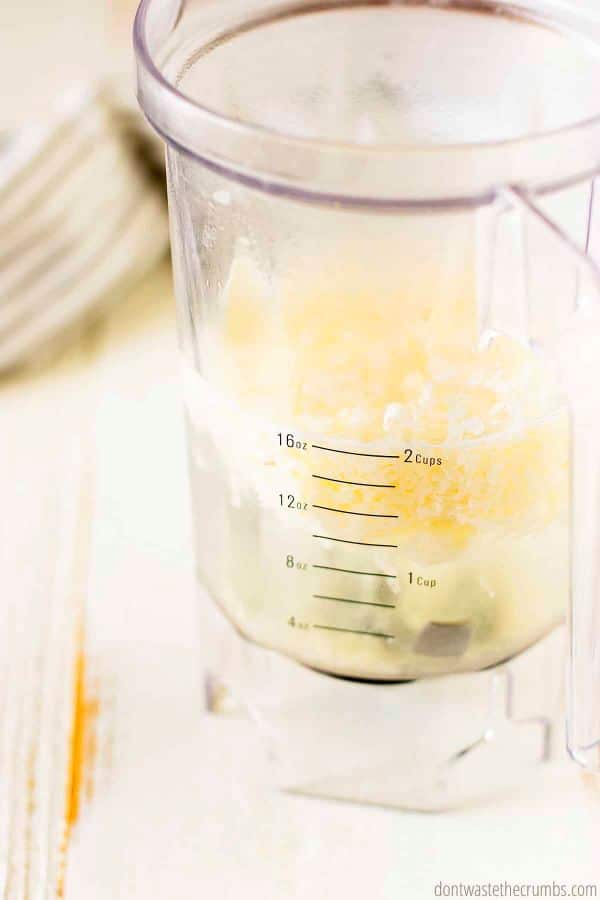
COCONUT MILK RECIPE TIPS
Make sure you use a blender capable of holding at least 6 cups. Be careful when you blend – the contents will be hot! Hold the lid on the blender with a towel.
I have a Blendtec and use the “whole juice” function twice to get creamy milk. You may have to run your blender for several rounds to get a creamy texture.
Some people like to use a nut milk bag to strain any remaining coconut pulp from the milk after blending, but I haven’t needed to do that for this recipe. If you feel like you need to strain any solids remaining after blending, you can use a nut milk bag, cheesecloth, or a fine mesh strainer. Add any coconut solids to granola or oatmeal for a bit of extra flavor.
Add optional sweetener and/or vanilla, starting with the least amount (1-3 tsp sweetener and ½-1 tsp vanilla) and tasting as you go. You may enjoy adding these if you plan on drinking the coconut milk, but not necessarily if you plan on using it in a savory recipe. Consider what you plan to use your coconut milk for before adding these.
Store homemade coconut milk in an airtight container or jar in the fridge for up to 7 days.
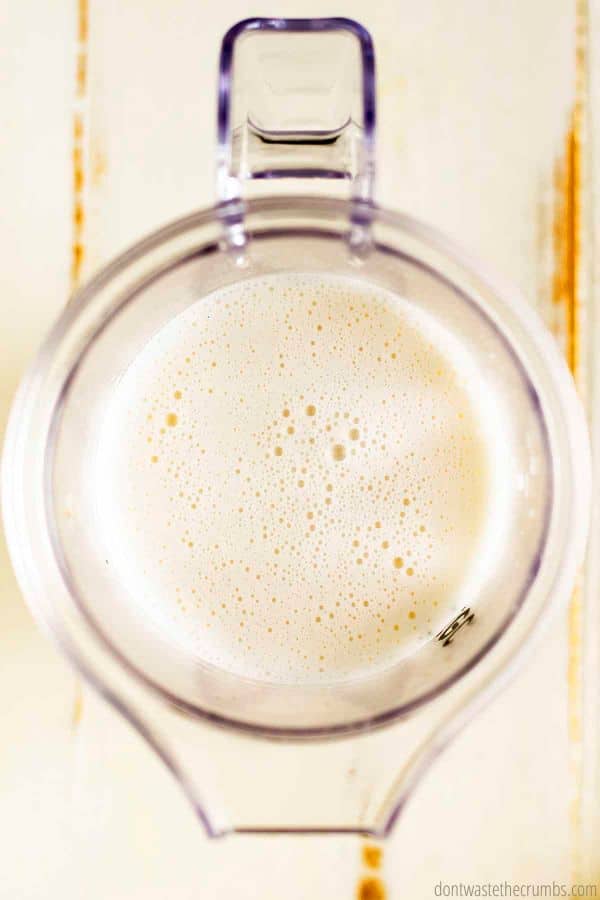
HOW TO MAKE COCONUT MILK FOR BAKING
The only real differences between the coconut milk that comes in a 32oz cardboard container (the drinking kind) and the coconut milk that comes in a can (the cooking kind) are:
- the drinking kind is thinner (think light coconut milk)
- the cooking kind has more fat (think full-fat coconut milk)
- the cooking kind has fewer additives
Fortunately, you can make your own homemade coconut milk for cooking too. Here’s how:
- Make a batch of homemade coconut milk following the steps above.
- Put it in the fridge to cool. The healthy fats will rise to the top and solidify.
- When cool, scoop out the cream that has risen to the top. Mix in enough of the separated coconut water to achieve the desired consistency.
Tip: Bringing the coconut cream to room temperature, or slightly warmer, will help make mixing easier.
Psst! You can also use that delicious coconut cream that you scoop off the top to make No Bake Blueberry Coconut Cream Pie – yum!
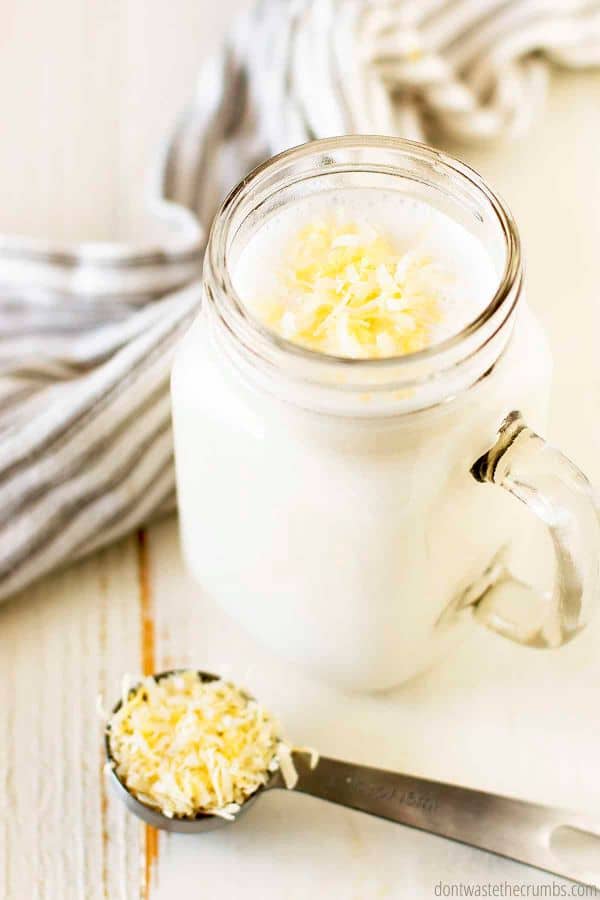
COCONUT MILK RECIPES
Whether you use your homemade coconut milk for drinking or baking, here are some recipes with coconut milk to get you started!
- Instant Pot Curried Butternut Squash Soup
- Coconut Rice
- Slow Cooker Thai Pineapple Vegetarian Curry
- Zuppa Toscana Soup
- Instant Pot Oatmeal
- Coconut Cream Popsicles
- 7 Days of Green Monster Smoothies
- Bulletproof Matcha Green Tea Latte
MILK FROM COCONUT FAQS
Is canned coconut milk better?
Canned coconut milk typically has fewer additives than the kind that comes in a carton, but it still has some. Learning how to make coconut milk at home means you can skip those additives AND save money!
Is coconut milk the healthiest milk?
Making your own coconut milk means that you control the ingredients, so you can choose a simple recipe without unnecessary additives and preservatives. Remember that the healthiest milk for you is going to be the one that works best for your diet, whether that’s dairy milk or a milk alternative like this one.
OTHER NON-DAIRY MILK ALTERNATIVES
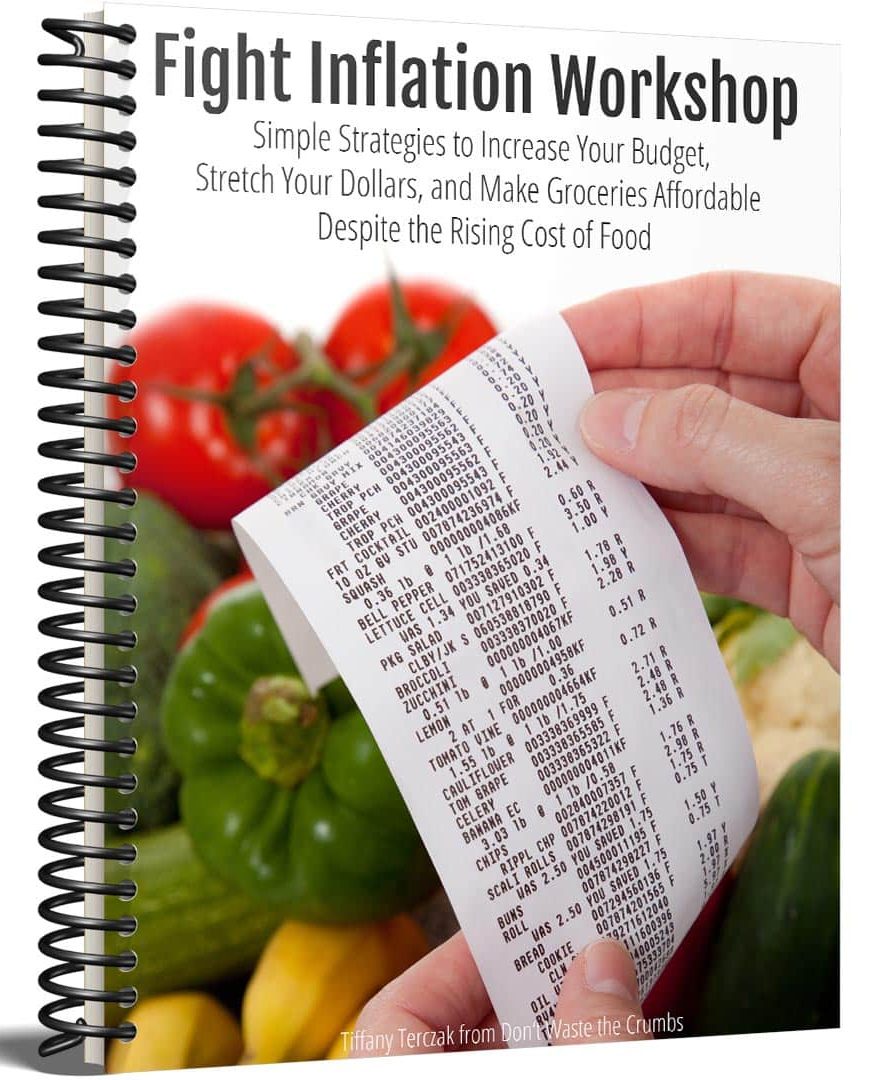
Fight Inflation Workshop!
Sign up for my FREE Fight Inflation Workshop and learn simple strategies to save money, even with rising food costs!WATCH HOW TO MAKE COCONUT MILK
Homemade Coconut Milk: Recipe and Dairy Alternative
Learn how to make coconut milk at home with only 2 ingredients! Rich, naturally sweet, and WAY cheaper than store-bought, this coconut milk is the perfect dairy-free alternative for cooking, baking, or drinking.
- Prep Time: 1 minute
- Cook Time: 0 minute
- Total Time: 1 minute
- Yield: 1 quart 1x
- Category: Beverages
- Method: Blend
- Cuisine: American
Instructions
- Measure coconut flakes and hot water into a blender. Process for 45 seconds to 1 minute and repeat.
Notes
- To use shredded coconut, use ¾ cup.
- For two cups: ½ cup coconut, 2 cups hot water
- For one cup: ¼ cup coconut, 1 cup hot water
- Store homemade coconut milk in an airtight container or jar in the fridge for up to 7 days.
Nutrition
- Calories: 400


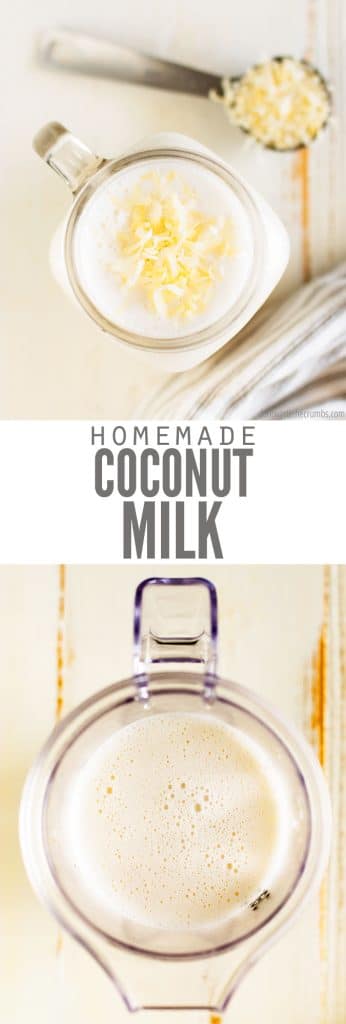
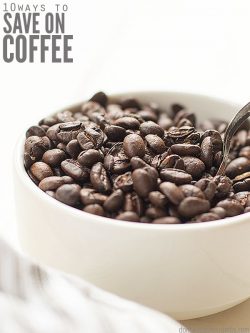

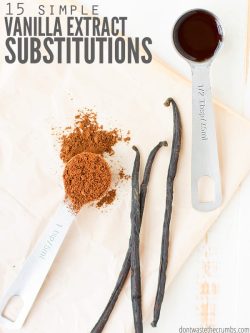



i made the coconut milk and it was truly delicious. but when i tried using it to make yogurt it didn’t work (the yogurt recipe specified it will probably only work with store bought coconut milk). Would you be able to explain why? And is there anything I can do to make my homemade coconut milk work for yogurt? Thank you so much!
Hello! I have tried to make my own coconut milk, and everything that I have read says that the milk will separate and you can use the top for coconut oil. Mine has separated, but it’s not solid. There is a white layer on the bottom, and a clearer liquid on top. Did I do something wrong?
Hi Cassie! Unless you add a stabilizer, the fats will naturally separate from the liquid – it will happen with all homemade milks. I suggest shaking it really well before using!
Can this be used at all in recipes that calls for coconut cream? So new to this dairy free game and the additives in all the dairy free stuff freak me out. Or could I just use the refrigerated stuff in place of the cream?
Coconut milk isn’t the same as coconut cream. This recipe is for milk, which will have the same consistency as regular milk. Coconut cream is very thick, since it’s the solidified coconut pulp and fat risen to the top of the can. In recipes calling for coconut cream, you want the canned kind. 🙂
I don’t even like coconut but I want to try this. I am willing to not drink it but will try it in smoothies. My brain is getting in the way.
I return to this website frequently. I’ve been making rice milk for a very long time, but today I was unfortunatlely out of rice. I used up the last of my milk and didn’t feel like going to the store just for that alone, but thankfully, remembered i had dessicated coconut from my December bakes (I’m a big fan of swedish Chokladbollar. Sweet and simple!)
You just saved my iced coffee. Thank you!
You’re SO very welcome Crow!
I am confused about the quantities.
1 C coconut flakes and 4 C hot water
OR 3/4 C shredded coconut and 4C hot water. Is that correct?
Hi Debbie,
It’s 1 cup unsweetened coconut flakes and 4 cups hot water! But if you are using shredded coconut, use 3/4 cup. Even though it’s about the same amount of total coconut, they lay differently while being measured. That’s why it’s different. Hope that helps!
Are you filtering the milk to get the shreds out? What do you do with them?
The sieve or cheesecloth on top of the bowl/container act as a filter when you squeeze the shreded coconut. Being frugal, you can add more water to the leftover shreds and squeeze again, but the coconut milk will not be as thick as the first batch squeeze.